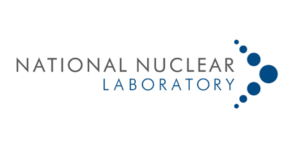Thursday 17 December 2015
A New Phlame
A new collaborative research group ‘PhLAME’, established by NNL and The University of Manchester, was launched at a formal event earlier this month. The prestigious event took place at the University of Manchester’s Photon Science Institute. PhLAME is the Photonics and Laser Analysis of Materials and Environments Research Group. It has been created around researchers from two separate NNL teams: – Environmental Services– Reactor Operations Support The NNL teams will work alongside schools from the University: – Earth and Environmental Sciences, Mechanical, Aerospace and Civil Engineering– Chemical Engineering and Analytical Sciences– Physics– Astronomy The PhLAME Group will undertake research in all aspects of photonics and laser-based characterisation and analysis, with a particular focus on nuclear industry applications. The research is roughly divided into three separate research themes, led by people from both organisations, some of whom are dual appointed The themes are:3D LiDAR / laser scanning, UAV/drone surveying and 3D/4D visualisation of materials and environments2D and 3D in-situ, miniaturised, stand-off laser spectroscopy of nuclear materials and environmentsIn-line and off-line laser characterisation and analysis, sensors and optical instrumentation Much of the PhLAME Group research is based in the state of the art laboratories in the University’s Photon Science Institute. These include the PHoton Analysis by Remote Observation Suite (PHAROS) Laboratory, which was officially launched in June last year. Research in the Photon Science Institute is currently focused on the development of laser-based, in-situ at-a-distance and in-line characterisation instrumentation and techniques, combined with laser-based geometrical surveying techniques. The work is specifically aimed at materials identification, characterisation and monitoring in nuclear and other industry environments, such as during the decommissioning of nuclear plants and monitoring of deep geological disposal facilities. Initial research has involved the creation of a Laser-induced Breakdown Spectroscopy (LIBS) spectral characterisation library for nuclear materials and the design, creation and successful testing of a remote Raman spectrometer utilising telescopic optics for the in-situ identification of materials over several metres. The PhLAME Group launch was attended by VIPs from the University and NNL and by others from industry. A high level group of keynote speakers introduced the PhLAME Group, explained the research work being undertaken and acknowledged those involved.
Commenting on PhLAME, NNL Chief Scientist, Andrew Sherry said: “The launch of the NNL/University of Manchester PhLAME Group provides an excellent example of high-profile collaboration between NNL and academia. “The fundamental and applied research that the Group undertake and, importantly, the translation of that research to real application within the nuclear industry will enhance nuclear operations, clean-up and waste management.”

